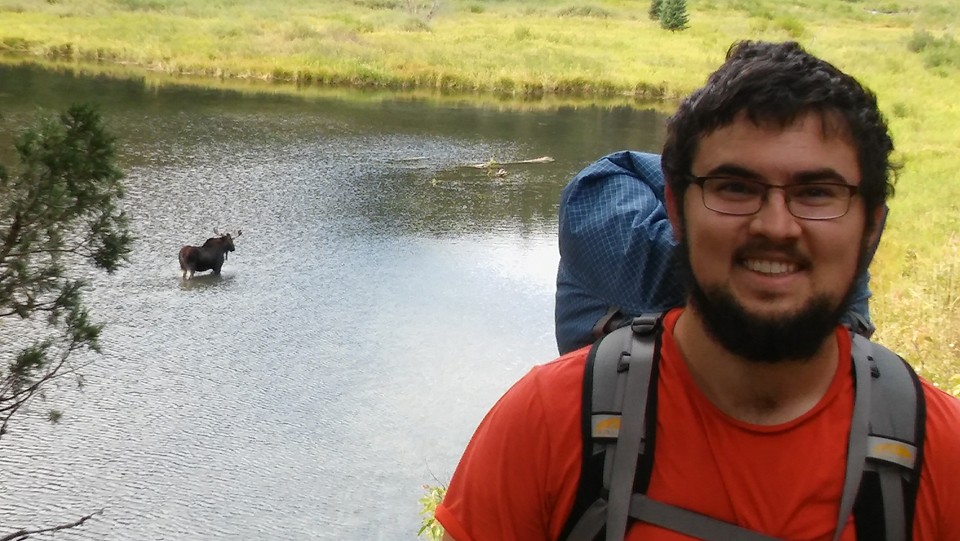Ryan Stewart

I am a fourth year Ph.D. student at Oregon State University working under Dr. Todd Palmer, but living in Idaho Falls where I am working at Idaho National Laboratory (INL) to complete my research. I obtained my masters degree (in nuclear science and engineering) from Idaho State University (ISU) while working under Dr. Chad Pope. Along with this, I obtained my bachelors degree at Washington State University (WSU) in physics. Throughout my education I’ve been a reactor operator at two research reactors (WSU’s TRIGA reactor and ISU’s AGN-201), which really pushed me to pursuing my degrees in nuclear engineering.
My masters work focused on helping create a benchmark model for the Experimental Breeder Reactor II (EBR-II) for the International Reactor Physics Experiment Evaluation Project (IRPhEP). The IRPhEP handbook is utilized by the reactor physics community as a tool to aid in the validation of calculational techniques and data. The focus of my work was to determine the viability of homogenization to specific areas of the core in the hopes of reducing the size of the input file, and the time required to run a simulation. To ensure the process produced accurate results, a sensitivity analysis was performed on a driver assembly for both a heterogeneous and homogeneous model. A full copy can be found here.
During my time at OSU, I have examined the material and geometric design space for a small prototypic sodium fast test reactor. This has included the effects of driving a sodium fast reactor with plutonium versus uranium fuel, and the effect fuel height/pin diameter on criticality, reactor safety parameters, and core burnup. Together this has generated a design space by which we can perform optimization on, and I am currently investigating different techniques for design optimization. Along the way I built a python framework for designing and generating input files for fast reactors called FRIDGe (Fast Reactor Input Deck Generator). Papers for FRIDGe and metallic fuel design space can be found here and here.
My dissertation research is developing a new methodology for solving large multi-objective optimization problems. The method utilizes a mutli-agent blackboard system (MABS), where agents solve portion of the problem independently and write their results to a central database (i.e. the blackboard). This method will be applied to a multi-tiered multi-objective optimization problem for determining reactor experimental constraints for a prototypic test reactor.
Feel free to email me at stewryan@oregonstate.edu.
Research Interests
- Fast Reactor Core Analysis
- Multi-Objective Optimization
- Machine Learning Applications for Reactor Physics
- Applications of Multi-Agent Systems to Reactor Physics/Optimization
Publications
- R. Stewart, C. Blakely, H. Zhang, “Investigation of a Two-Year Cycle Pressurized Water Reactor Core Design with Increased Enrichment and Extended Burnup Limits,” Nuclear Engineering and Design, (Submitted for Internal Review).
- D. LaBrier, B. Lilley, A. Higgins, R. Stewart, et al, “Design of an Experimental Test Loop for Fast Spectrum Test Conditions,” Annals of Nuclear Energy, (Submitted for Internal Review).
- R. Stewart, E. Lum, and C. Pope, “Design of an experimental breeder reactor run 138B reactor physics benchmark evaluation management application,” Journal of Nuclear Science and Technology, pp. 1-12, 2019, doi:10.1080/00223131.2019.1680325.
- E. Lum, C. Pope, R. Stewart, et al. “Evaluation of Run 138B at Experimental Breeder Reactor II, A Prototypic Liquid Metal Fast Breeder Reactor,” International Handbook of Evaluated Reactor Physics Benchmark Experiments, OECD, 2018.
- R. Stewart, C. Pope, and E. Ryan, “Fast Spectrum Reactor Fuel Assembly Sensitivity Analysis,” Annals of Nuclear Energy, vol. 110, 2017, pp. 1091-1097.
Conference Publications
- R. Stewart, T.S. Palmer, S. Bays, “Towards an Agent-Based Blackboard System for Reactor Design Optimization,” ANS Mathematics and Computational Methods 2021, (Submitted for Internal Review).
- N. Martin, R. Stewart, Z. Xu, S. Bays, “Development of a Griffin Reactor Physics Analysis Code Model for the Versatile Test Reactor,” ANS Mathematics and Computational Methods 2021, (Submitted for Internal Review).
- R. Stewart and T.S. Palmer “Utilizing a Reduced-Order Model and Physical Programming for Preliminary Reactor Design Optimization,” in PHYSOR2020: Transition to a Scalable Nuclear Future.
- R. Stewart, and T. Palmer, “Geometric Design Space for Sodium Fast Reactors,” Transactions of the American Nuclear Society, vol. 121, 2019, pp. 1532-1535.
- R. Stewart, and T. Palmer, “Fast Reactor Input Deck Generator (FRIDGe),” Transactions of the American Nuclear Society, vol. 121, 2019, pp. 1514-1517.
- R. Stewart, and T. Palmer, “Metallic Fuel Design Space for Sodium Fast Reactors,” Transactions of the American Nuclear Society, vol. 119, 2018, pp. 1116-1119.
- D. LaBrier, R. Stewart, et al., “Design of an In-Pile Experimental Loop for Fast Test Reactor Conditions,” Transactions of the American Nuclear Society, vol. 119, 2018, pp. 1271-1274.
Misc. Publications
- F. Gleicher, R. Stewart, S. Bays, “Misuse Detection for a Generalized SFR Test Reactor,” INL, Idaho Falls, INL/EXT-20-00467, July 2019.
- H. Zhang, C. Blakely, J. Yu, R. Stewart, and M. Asgari, “Fuel Rod Non-Burst Potential under LOCA Conditions for an Existing Plant with Extended Burnup Exceeding the Current Burnup Limit by 20\%,” INL, Idaho Falls, INL/EXT-19-55888, Oct. 2019.
- R. Stewart, “FRIDGe: Fast Reactor Input Deck Generator,” Journal of Open Source Software, 4 (40), 1489. https://doi.org/10.21105/joss. 01486.
Other Interests
I am currently living in Idaho Falls and enjoy getting outdoors, visiting national parks/monuments, and hiking anywhere in nature. When I’m not outdoors I enjoy time with friends and family playing a variety of board games.